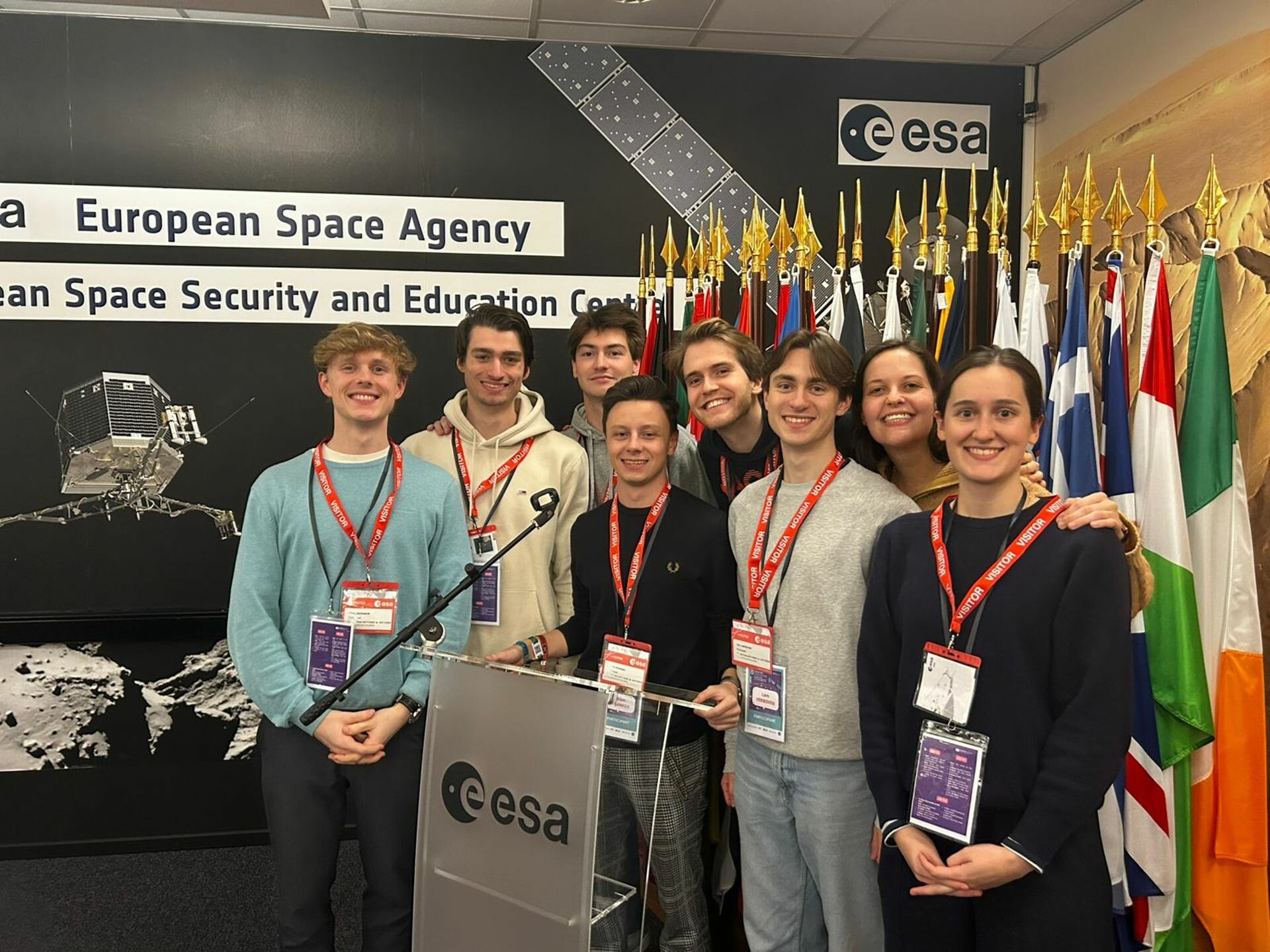A weekend with innovators: The 8th Cassini Hackathon

The sun painted the Belgian Ardennes in warm colours, with white antennas standing out gracefully on the hillsides.

In this picturesque setting, at the European Space Agency’s ESEC site in Redu, Belgium, a group of innovators gathered for a weekend to develop top projects for Europe’s security and defence using EU Space capabilities.
The 8th CASSINI Hackathon, organised by the European Union Agency for the Space Programme (EUSPA) and the European Commission, took place simultaneously at 10 locations across Europe, including Belgium, Italy, Ukraine, Slovenia, and the Netherlands. This year’s theme focused on enhancing EU Space capabilities for defence and security, with each Team selecting one of three proposed challenges to develop their project:
#1 Enhancing defence and security with geospatial intelligence
#2 Unmanned drone applications for defence and security operations
#3 Orbital security: navigating the collision frontier
The opening ceremony of the Belgian edition began, and Jean Luc Trullemans, Head of ESA ESEC, welcomed the innovators at the site, marking the official start of the hackathon weekend.
A matchmaking session led to the creation of nine teams, including three online, bringing together participants with diverse expertise and backgrounds to develop a successful and winning strategy.
The hackathon attracted a diverse and multidisciplinary group of participants, including students, young professionals, and experts. Among them were astrophysicists, environmental engineers, computational mathematics engineers, space policy experts, and business students as well.
As the evening continued, the competition started to take shape. Interestingly, many teams chose the challenge on drone applications, just a few the one about orbital security, and only one team tackled the first challenge on geospatial intelligence, and Eurisy found here the perfect fit. Initially invited to support and partner with the event, Eurisy soon became fully integrated into the competition as an active team member, gaining a unique, behind-the-scenes look at the hackathon, its participants, and the weekend’s atmosphere. From the very first night, the teams immersed themselves in developing their main project ideas, working until the early morning hours to begin shaping their innovative concepts.
The following morning, a sense of excitement and concentration permeated the ESEC site, as teams assembled in rooms to begin tackling the key question of their project idea: identifying the primary user and the buyer of their prospective innovation.
Moments of complete silence alternated with bursts of joy as the innovators gradually shaped their ideas, supported both morally and technically by a dedicated team of mentors and facilitators.



The afternoon saw the first demo pitching sessions, where each team presented for the first time their ideas to the mentors and jury, showcasing their innovation with the main goal of sparking their interest.
Afterwards, it was the turn of another critical task: turning the project into a valuable and attractive business idea. 

A social night boosted the innovators’ morale and provided a fantastic networking opportunity to connect with the rest of the group and learn more about the other project ideas.
Soon, the final day dawned, and the teams gathered once more for last-minute checks and preparations ahead of the closing ceremony and pitching session in front of the selected high-level jury.

From left to right: Natacha Callens, ESA Education engagement; General Major Michel Van Strythem, Belgian Cyber Command; General Major Thierry Dupont, Belgian Air and Space Command; Jean Luc Trullemans, Head of ESA ESEC site; David Jaroszewski, Belgian Federal Judicial police Chief Superintendent Sr Advisor R&D &ICT Strategy; Sophie Lavaux, General Director of Safe Brussels & Gouverneur de la région bruxelloise; Adrin Pain, SSG-CS Group, Business developer.
The moment arrived, and each team stepped onto the stage, showcasing their finest pitching skills to persuade and impress the jury. 
It was remarkable to witness the hard work and innovative ideas that each team brought to life in just a few hours, along with the great teamwork spirit behind each project.
Faced with challenging questions from the jury, all the speakers put forth their best efforts to demonstrate that their solution was the most innovative and could significantly contribute to supporting EU security and defence.
The time of the deliberation arrived. After an intense hour, the jury finally agreed, and the team Godfeather was officially announced as the winner of the Belgian hackathon edition. 

The team of students from KU Leuven’s Master of Space Studies developed a project focused on modular, autonomous drone fleets designed for real-time, high-resolution mapping in emergency scenarios and critical areas.
Their innovative project integrates the Copernicus Emergency Management System (CEMS) and Galileo (GNSS) data to deploy modular, autonomous drone fleets for real-time, high-resolution mapping in emergency scenarios and critical areas. This new product concept allows first responders to access high-fidelity, tailored maps, significantly enhancing their situational awareness during disasters like floods, ultimately saving precious time and lives.

As the weekend drew to a close, the teams began to bid farewell to their new friends after an unforgettable experience. The sun was setting on the ESEC site, and one last walk around the antennas was the perfect way to say the final goodbye.
What an inspiring weekend! Hear directly from the participants themselves!


